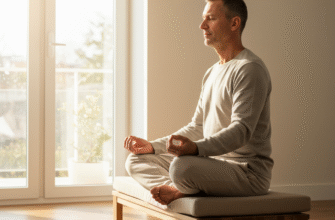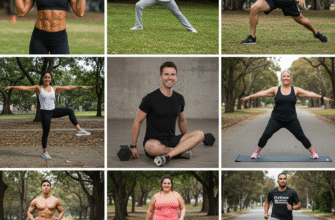Content
Sharpening Your Internal Compass: How Proprioception Training Works
Proprioception training essentially challenges your body’s awareness system. By performing exercises that deliberately destabilize you or require precise control without full visual reliance, you stimulate the specialized nerve endings (proprioceptors) located in your muscles, tendons, ligaments, and joints. These receptors send signals along neural pathways to the brain, which interprets the data and sends back commands to the muscles for adjustment. Regular training strengthens these pathways, making the communication faster and more accurate. Think of it like upgrading your body’s internal GPS – the signal becomes clearer, and the navigation more precise. Exercises often involve unstable surfaces (like balance boards, wobble cushions, or even just standing on one leg), closing your eyes during movements, or performing tasks that require fine motor control and limb position awareness. The goal isn’t necessarily brute strength, but rather enhancing the sensitivity and responsiveness of the neuromuscular system.The Tangible Benefits of Enhanced Proprioception for Balance
Improved Stability and Reduced Fall Risk
This is perhaps the most direct and impactful benefit. As proprioception improves, your body becomes far better at detecting subtle shifts in weight or surface changes. This allows for quicker, more effective muscle activation to correct imbalances before they lead to a loss of balance. For older adults, this is particularly vital in reducing the risk of falls, which can have serious consequences. But it’s not just for seniors; anyone can benefit from enhanced stability, whether navigating icy sidewalks or carrying heavy groceries. Better balance means greater confidence in movement. You feel more secure on your feet, less hesitant on uneven terrain, and generally more capable in your physical interactions with the world. This improved stability underpins many daily activities, making them safer and easier to perform.Enhanced Athletic Performance
Athletes across disciplines rely heavily on superior balance and body awareness. Proprioception is key to agility, coordination, and power generation. Consider a basketball player landing after a jump, a skier navigating moguls, or a dancer executing a complex turn. All these actions require instantaneous adjustments based on proprioceptive feedback. Training proprioception helps athletes:- Improve Agility: Faster recognition of body position allows for quicker changes in direction.
- Increase Power: A stable base allows for more efficient force transfer through the body.
- Refine Technique: Better awareness of limb position leads to more precise and efficient movement patterns.
- Boost Coordination: Seamless integration of movements becomes easier when the brain has a clear picture of what the body is doing.
Effective Injury Prevention and Rehabilitation
Many common injuries, particularly ankle sprains and knee ligament tears (like ACL injuries), occur during moments of instability or awkward landings. When proprioception is compromised, often following a previous injury, the risk of re-injury increases significantly. The joint may not send accurate signals to the brain, or the brain may not respond quickly enough to protect it. Proprioception training is a cornerstone of rehabilitation programs for lower limb injuries. It helps retrain the neural pathways, restoring the joint’s position sense and improving neuromuscular control. By incorporating balance and proprioceptive exercises, individuals can regain stability and significantly reduce their risk of future injuries. Furthermore, proactively training proprioception can act as a pre-emptive measure, strengthening the body’s ability to handle unexpected forces and maintain joint stability, thereby preventing injuries from happening in the first place.Better Movement Coordination and Control
Balance isn’t isolated; it’s intertwined with overall coordination. Proprioception helps synchronize the actions of different muscle groups, leading to smoother, more efficient movements. Whether you’re learning a new dance step, mastering a yoga pose, or simply walking across a room, enhanced proprioception contributes to better control and grace. This improved coordination extends to fine motor skills as well. While often associated with large movements, proprioception also informs the brain about the position of smaller body parts, like fingers, aiding in tasks requiring dexterity. It’s about the brain having a constantly updated, high-resolution map of the entire body.Understanding the Connection: Proprioception provides the essential sensory information your brain needs to maintain balance. It constantly monitors limb position and muscle tension. Effective balance relies directly on the quality and speed of this incoming proprioceptive data, allowing for rapid adjustments to stay upright.
Integrating Proprioception Training into Your Routine
The good news is that incorporating proprioception and balance training doesn’t require expensive equipment or huge time commitments. Simple exercises can be incredibly effective.Starting Simple
Begin with foundational exercises:- Single-Leg Stance: Stand on one leg for 30 seconds, then switch. Increase difficulty by closing your eyes (ensure you’re near a wall or chair for support initially) or standing on a slightly uneven surface like a pillow.
- Tandem Stance/Walk: Stand or walk with one foot directly in front of the other, heel-to-toe, as if on a tightrope.
- Weight Shifts: Stand with feet hip-width apart and slowly shift your weight side-to-side or forward-and-back, focusing on control.
Adding Challenge
As you improve, introduce more dynamic or challenging elements:- Unstable Surfaces: Use wobble boards, balance discs, BOSU balls, or foam pads for exercises like squats, lunges, or single-leg stances.
- Dynamic Movements: Incorporate exercises like walking lunges, single-leg deadlifts (Romanian deadlifts), or step-ups with a balance component.
- Eyes-Closed Variations: Carefully attempt variations of familiar balance exercises with your eyes closed to heighten reliance on proprioceptive feedback.
- Reactive Drills: Have a partner gently push you off balance (start very gently!) or toss a ball to you while you maintain balance on one leg or an unstable surface.









